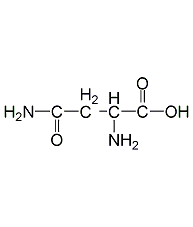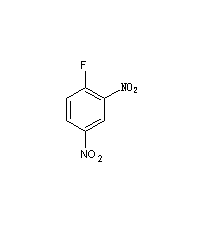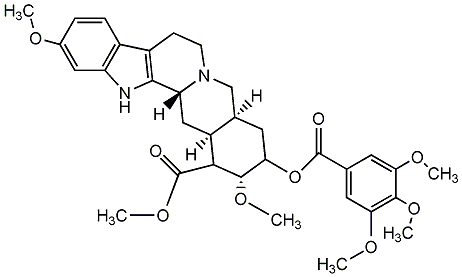
Structural formula
| Business number | 01G4 |
|---|---|
| Molecular formula | C4H8N2O3 |
| Molecular weight | 132.12 |
| label |
biochemical reagents, Intermediates |
Numbering system
CAS number:70-47-3
MDL number:MFCD00064401
EINECS number:200-735-9
RTECS number:None
BRN number:1723527
PubChem number:24860328
Physical property data
1. Properties: white crystal. Odorless. Soluble in acid and alkali solutions, slightly soluble in water, almost insoluble in ethanol, ether, methanol and benzene.
2. Density (g/mL, 25/4?): (d15/4) 1.404
3. Relative vapor density (g/mL, air=1): Not available Determined
4. Melting point (ºC): 234-235
5. Boiling point (ºC, normal pressure): Undetermined
6. Boiling point (ºC, normal pressure) 5.2kPa): Not determined
7. Refractive index: Not determined
8. Flash point (ºC): Not determined
9. Specific rotation ( º): [a] 20/D+20.0° (in 1mol/L hydrochloric acid), -9.3° (in 1mol/L sodium hydroxide).
10. Autoignition point or ignition temperature (ºC): Undetermined
11. Vapor pressure (kPa, 25ºC): Undetermined
12. Saturation Vapor pressure (kPa, 60ºC): Undetermined
13. Heat of combustion (KJ/mol): Undetermined
14. Critical temperature (ºC): Undetermined
15. Critical pressure (KPa): Undetermined
16. Log value of oil-water (octanol/water) partition coefficient: Undetermined
17. Explosion upper limit (% , V/V): Undetermined
18. Lower explosion limit (%, V/V): Undetermined
19. Solubility: Soluble in acid and alkali solutions, slightly soluble In water, almost insoluble in ethanol, ether, methanol and benzene.
Toxicological data
None
Ecological data
None
Molecular structure data
1. Molar refractive index: 29.20
2. Molar volume (cm3/mol): 94.0
3. Isotonic specific volume (90.2K ): 273.6
4. Surface tension (dyne/cm): 71.6
5. Polarizability (10-24cm3): 11.57
Compute chemical data
1. Hydrophobic parameter calculation reference value (XlogP): -3.4
2. Number of hydrogen bond donors: 3
3. Number of hydrogen bond acceptors: 4
p>
4. Number of rotatable chemical bonds: 3
5. Number of tautomers: 2
6. Topological molecular polar surface area (TPSA): 106
7. Number of heavy atoms: 9
8. Surface charge: 0
9. Complexity: 134
10. Isotopic elementNumber of subunits: 0
11. Determine the number of atomic stereocenters: 1
12. Uncertain number of atomic stereocenters: 0
13. Determine chemical bonds Number of stereocenters: 0
14, Number of uncertain chemical bond stereocenters: 0
15, Number of covalent bond units: 1
Properties and stability
1. Exists in flue-cured tobacco leaves, burley tobacco leaves and smoke.
Storage method
Stored sealed and protected from light.
Synthesis method
1. Aspartic acid is produced by acetylation.
2. Extracted from natural products.
Purpose
1. Microbial culture. Peptide synthesis. Test aminotransferase substrate. Tuberculosis culture. Preparation of biological culture media.
2.For the treatment of female breast lobular hyperplasia and gynecomastia.
3. It is used in microbial culture, sewage treatment, and raw materials for polypeptide synthesis. It is one of the components that constitute protein.
extended-reading:https://www.bdmaee.net/wp-content/uploads/2022/08/Potassium-neodecanoate-CAS26761-42-2-Neodecanoic-acid.pdfextended-reading:https://www.cyclohexylamine.net/2-methylcyclohexylamine/extended-reading:https://www.bdmaee.net/18-diazabicycloundec-7-ene-cas-6674-22-2-dbu/extended-reading:https://www.morpholine.org/category/morpholine/page/5393/extended-reading:https://www.bdmaee.net/teda-l25b-polyurethane-tertiary-amine-catalyst-tosoh/extended-reading:https://www.cyclohexylamine.net/dabco-eg-pc-cat-td-33eg-niax-a-533/extended-reading:https://www.bdmaee.net/sponge-catalyst-smp/extended-reading:https://www.bdmaee.net/wp-content/uploads/2022/08/33.jpgextended-reading:https://www.bdmaee.net/wp-content/uploads/2022/08/51.jpgextended-reading:https://www.newtopchem.com/archives/1139





